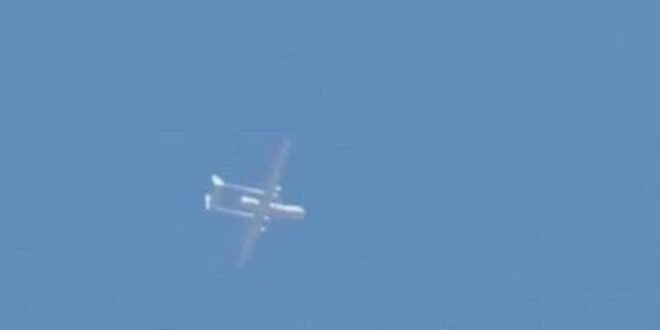Author: Charles Wote | Published: 4 hours ago
Some people viewed the movements of the drone-like objects as an invasion of privacy and infringement on their rights | Credit | Courtesy
The deputy minister of information has confirmed that the object that appeared recently in the skies of Juba was a balloon operated by Google to provide internet in rural South Sudan.
On Friday, some residents of Juba watched as two objects flew over their homes, creating panic and raising concerns among members of the public.
The objects reportedly hovered over the city for 2 consecutive days.
Some people viewed the movements of the drone-like objects as an invasion of privacy and infringement on their rights.
Others thought South Sudan’s airspace had been invaded by foreign agents.
But the government says it did authorize the activities of the drone-like objects.
“We made an agreement with Google that we need to have the mobile internet in the region and that is targeting the rural areas,” Baba Medan told Eye Radio on Tuesday.
When contacted by Eye Radio, the Director-General of NCA confirmed knowledge of Google activities in Juba.
Napoleon Adok affirmed that the work does not pose any harm or infringe on people’s rights.
“So that balloons it is not a threat to people, it is trying at 50,000 feet which is almost 20 kilometers above the earth. It is safe,” he stated.
He said the project will benefit internet users across the country.
“What the google balloon tries to do is to introduce a technology called LPE 4G, which is a high-speed technology and they try to make that connection without you having to wait for the installation of towers. It is now at a testing stage,” he added.
In 2013, the American tech giant launched internet connectivity in rural and remote communities across Africa using balloons under its Loon project.
The network of balloons carry solar-powered equipment in the sky to send high-speed Internet signals to the ground.
The balloons are designed to stay around 20 kilometers above sea level and weather events – for 100 days before landing back on Earth in a controlled descent.
Each balloon carries an antenna that relays internet signals transmitted from the ground extending coverage over an area of 5,000 square kilometers using 4G internet.
Over the past few years, Loon has been holding trials in several African countries including Nigeria, Botswana, South Africa, Mauritius, Seychelles, the DRC, Congo Republic and Mozambique.
Google recently got approval from the Kenyan government to commence tests after reaching an agreement with Telkom Kenya to provide 4G to remote areas.
It has also agreed to provide Internet access in rural Uganda.
Police detain presidential candidate Bobi Wine
 Unmanned Aerial Vehicle The latest drone news
Unmanned Aerial Vehicle The latest drone news


